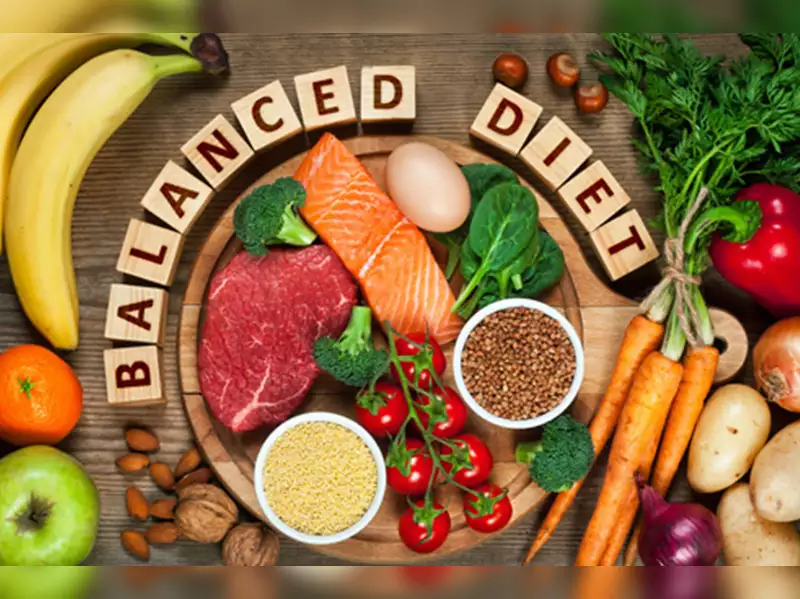Avoid the sugar trap.
Sugar and foods, and beverages rich in sugar should only be consumed in small amounts. Sugar provides so-called “empty” calories because it contains hardly any nutrients. In addition, sugar leads to strong blood sugar fluctuations, which can encourage food cravings. Sweeteners such as steviol glycosides are an excellent alternative to sugar in a healthy diet. Steviol glycosides, a purified extract from the stevia plant, have no calories.
Tip : Adequate hydration
Adequate hydration is essential for health and a healthy diet. At least 1.5 to 2 litres should be drunk daily. For active people, the fluid requirement is at least 3 litres. Water and other low-calorie, unsweetened drinks are best. Sugary sodas and alcohol should be avoided as much as possible in a healthy diet.
Tip : gentle preparation
The type of preparation also plays a vital role in a healthy diet. Many nutrients are susceptible to heat. Food should therefore be cooked as briefly as possible and at low temperatures in little fat or water. This protects the nutrients, prevents the formation of harmful compounds and also preserves the natural taste.
Tip : take your time and enjoy
A healthy diet also includes a healthy eating rhythm. Those who often eat in between or in a hurry usually eat a lot more. Because saturation only occurs after a few minutes. Therefore, it is better to take a little more time for meals, chew well and enjoy.
Healthy eating plan
Regardless of your goal – nutrition is always individual. A ready-made nutrition plan that does not fit into your everyday life will not satisfy you in the long term. Conveniently download our PDF template for a nutrition plan and put it together yourself. Based on your preferences and your everyday life.
Healthy eating recipes
A healthy eating plan requires that you cook in a healthy and balanced way. Eating healthy – made easy with our favourite recipes. Best of all, the recipes are designed by our ecotrophologist, taking into account the rules of a balanced diet.
Chocolate coconut yogurt with fruit
With our yogurt bowl with fresh fruit, you get vitamins and an extra portion of protein. Ideal as a snack or for breakfast. We are prepared in no time!
This round-up of a more significant, upcoming publication on science-based components of food and nutrition policy is aimed at policymakers. It names food and nutrition-related health problems and their follow-up costs, and the need for political action and possible solutions. The book and the abstract emphasize the urgency of an integrated, cross-sectoral food and nutrition policy that stimulates the sustainable production of safe food and promotes its general availability in high quality and with great nutritional value.
Poor nutrition, food diseases and lack of access to good food are significant contributors to the burden of disease and mortality in Europe. Better eating habits and a secure supply of safe food reduce and prevent individual and societal suffering and help limit health costs and are of social and economic benefit to countries.
People’s chances of eating a healthy diet depend less on individual decisions than on the availability and affordability of food. To promote health through good food and nutrition, measures must go beyond the health sector to reach agriculture, the food industry, freight forwarding, wholesaling and retailing, catering, and advertising. Food and nutrition policy must be geared towards public health as a matter of priority, even if it takes place outside the health sector.
Healthy Diet: What Is It?
In everyday working life, a healthy diet with a solid nutrient supply affects our well-being, and our performance is often underestimated. But what does healthy mean? What does our body need to be fit all day?
Didactic and methodological comment
The statutory accident insurance teaching materials aim to make the central task of nutrition into the consciousness of trainees of all branches. And this task lies in the adequate supply of the body with all essential nutrients. The learners work independently; The food industry offers a wide variety of products for putting together a varied diet and for every individual lifestyle.
Energy and nutrient requirements differ from person to person and daily and depend on many factors, especially physical activity. Guide values for energy and nutrient intake can therefore only be used as a guide. Every nutrient has an exceptional value for the human organism. Carbohydrates, protein and fat are so-called macronutrients and – besides water – the main components of our food. This means that they are also the most critical energy suppliers for humans. Vitamins and minerals, so-called micronutrients, on the other hand, do not provide the body with energy but provide it with essential substances.
The nutritional labelling helps a little further so that the correct amount can be found more easily. It identifies z: B. the calorie content and the amounts of carbohydrates, protein and fat.
As part of a balanced diet, an individual dietary supplement can help achieve the recommended intake of vitamins, minerals and other substances.
Obesity is a significant challenge for our society. The causes of obesity are very complex and cannot be traced back to diet alone.
In an allergy or food intolerance, the person affected will restrict certain foods or food groups or even avoid them entirely.
Energy and nutrient requirements
Energy and nutrient requirements differ from person to person and daily and depend on many factors, especially physical activity. Therefore, guide values can only be used as a guide for the composition of the diet.
Overweight and obesity are risk factors for developing various diseases such as cardiovascular disease, high blood pressure or diabetes and are a significant challenge for our society.
Food allergies are seen as the cause of many complaints and trigger many questions and uncertainties in those affected and their relatives.





